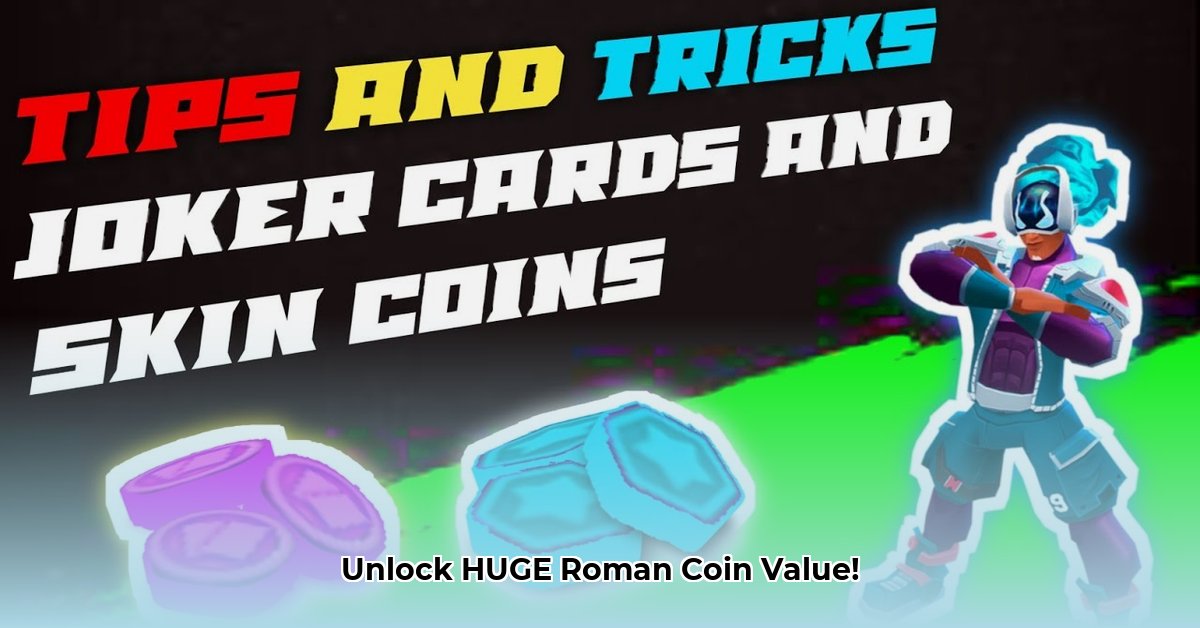
Skin Coins: Unveiling the Secrets of Ancient Roman Coin Value
Imagine holding a piece of history—an ancient Roman coin, its surface whispering tales of emperors and empires. That captivating sheen? It's called patina, a naturally formed protective layer that significantly impacts a coin's value. This article explores the fascinating world of patina, guiding you through identification, preservation, and market navigation to maximize your Roman coin investment.
What Makes a Skin Coin So Special?
The value of an ancient Roman coin isn't just about the emperor or date; it's significantly influenced by its patina. This unique surface coloration, formed naturally over centuries, is a historical fingerprint, reflecting the coin's journey through time. A "skin coin," one retaining its original patina, commands a higher price due to its authenticity and historical significance. The original patina serves as irrefutable proof of age and history, distinguishing it from coins that have been cleaned or artificially treated. It’s the difference between a pristine antique car and a meticulously restored one—the original always holds more weight.
Understanding Patina: Nature's Protective Coating
Patina is a complex chemical reaction, a slow, natural aging process where the coin's metal interacts with its environment. Soil composition, humidity, temperature, and air quality all contribute to the unique colors and textures we see. This natural transformation also acts as a protective barrier, slowing deterioration and preserving the underlying metal. It's nature's own conservation technique. Consider a coin unearthed from a dry climate versus one discovered in a humid environment—the resulting patinas will starkly differ, each reflecting a unique environmental narrative.
Patina's Impact on Authenticity and Price
The presence or absence of original patina dramatically affects a coin's value. Skin coins, retaining their original patina, fetch significantly higher prices. Why? Because these pristine examples are rare – a direct link to the past. Conversely, cleaning or polishing removes this crucial patina, destroying valuable historical information and reducing the coin's worth. Reputable collectors and dealers prioritize the preservation of original patina, understanding its monetary and historical importance. According to some experts, removing original patina can decrease a coin’s value by over 50%. Does this significant value difference make investing in the preservation of patina worthwhile? Absolutely.
Identifying Authentic Patina: A Collector's Guide
Identifying authentic patina requires a keen eye and experience. Authentic patina exhibits subtle variations in color and texture, blending seamlessly with the coin’s surface.
Here's how to differentiate authentic from artificial patina:
Analyze Color: Authentic patina shows subtle, uneven gradations—never a perfect, uniform color.
Feel the Texture: Genuine patina feels integrated, a part of the coin itself. Fake patina might feel slightly raised or separate.
Look for Consistency: Artificial toning is usually remarkably uniform, lacking the natural variations of authentic patina.
High-quality images are invaluable tools when learning to differentiate between real and artificial patina.
Protecting Your Skin Coins: Preservation Strategies
Proper handling and storage are paramount for preserving a skin coin's original patina. These are delicate historical artifacts.
Handling: Always use soft cotton gloves to prevent oils and acids from your skin. Minimize handling.
Storage: Store in acid-free holders or sleeves within protective cases, in a stable, climate-controlled environment to minimize temperature and humidity fluctuations.
Display: When displaying, limit light and humidity exposure. Use UV-protective cases.
These steps extend a skin coin's life and preserve its historical and monetary value.
Navigating the Skin Coin Market: Buying and Selling with Confidence
Transparency is paramount in the coin market. Deal only with reputable dealers. Thoroughly research any potential purchase; demand complete documentation, including provenance and a clear description of the coin's condition, emphasizing the patina assessment.
Risk Assessment:
| Factor | Risk Level | Mitigation |
|---|---|---|
| Damaged Patina | High | Buy from reputable dealers; avoid cleaning. |
| Misrepresented Patina | High | Thoroughly research; verify authenticity; seek expert opinions. |
| Lack of Provenance | Medium | Demand clear provenance documentation; be wary of vague or absent histories. |
Conclusion: Preserving History, Protecting Value
Investing in skin coins is more than collecting; it’s preserving history. Understanding patina's significance allows for informed choices, protecting both historical and monetary value. Stay informed—ongoing research continually refines our understanding of patina formation and preservation.
Key Takeaways:
- Original patina dramatically increases the value of ancient Roman coins.
- Natural patina adds value; artificial patina drastically reduces it.
- Proper coin care is crucial for preserving patina and enhancing value.
- Authenticity and provenance are essential factors influencing value.